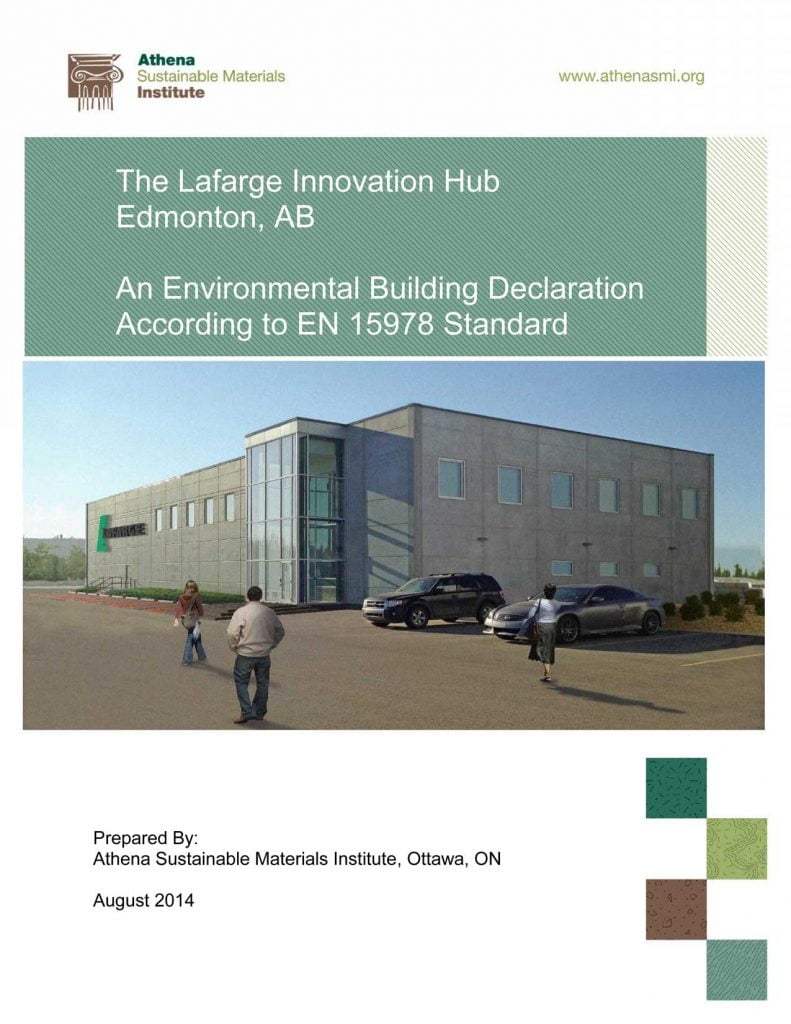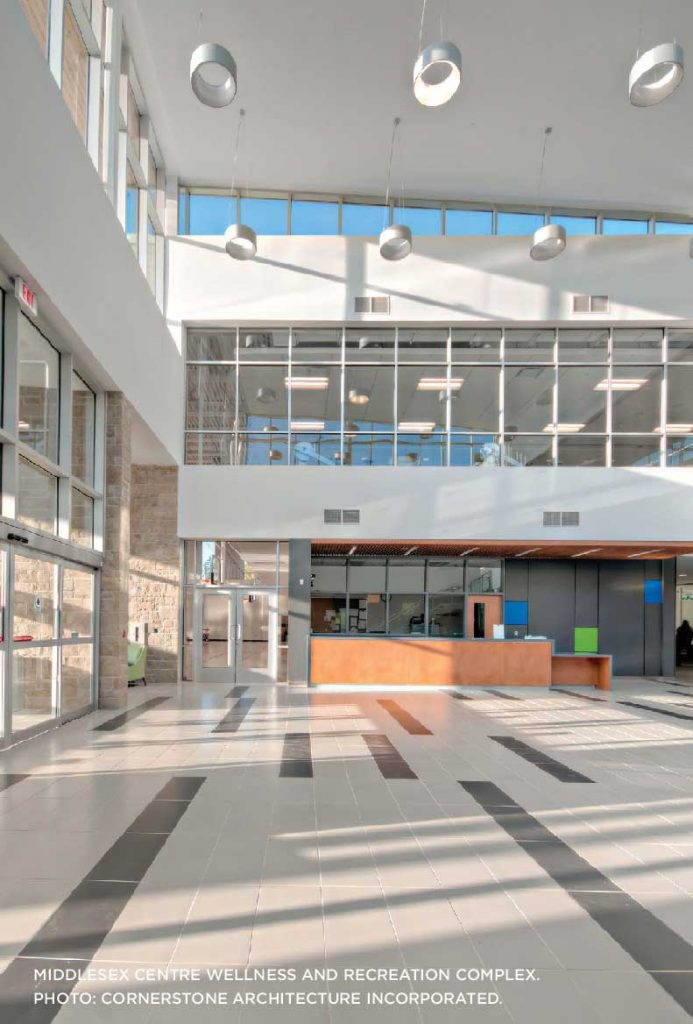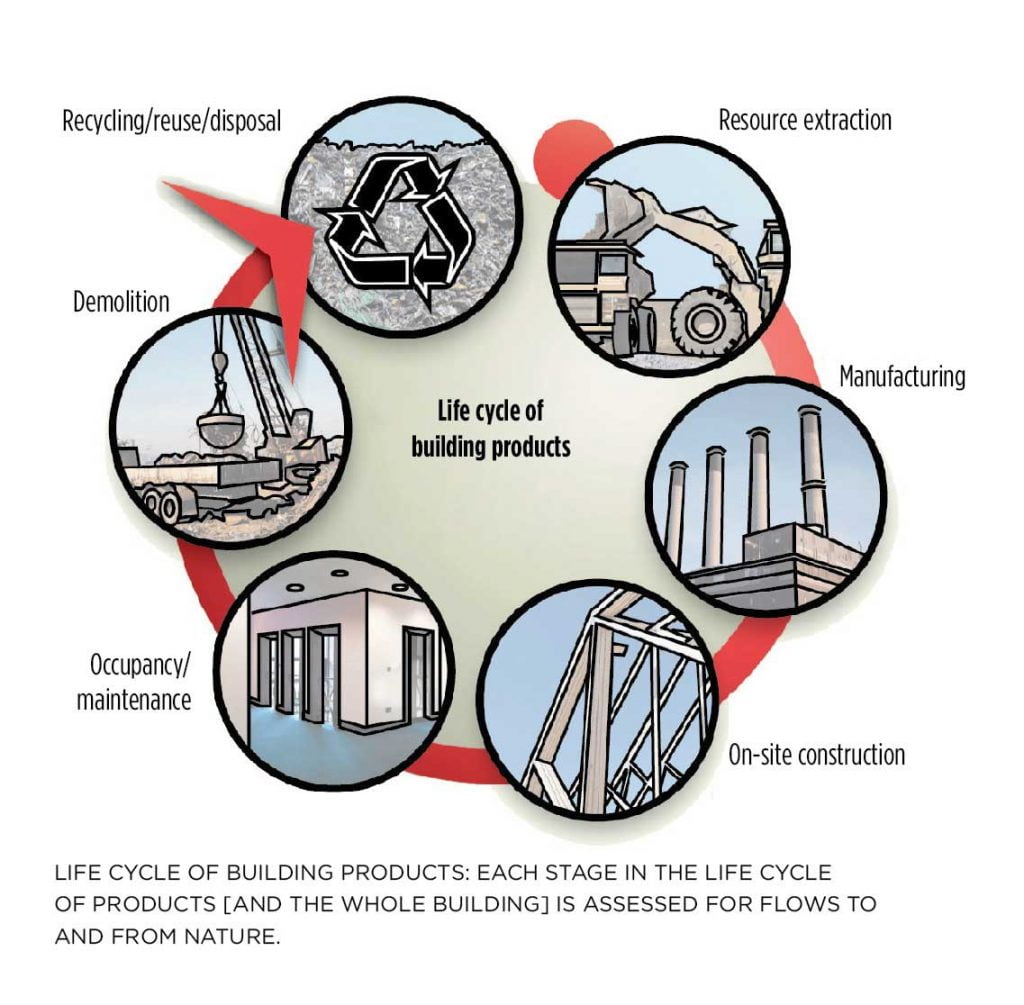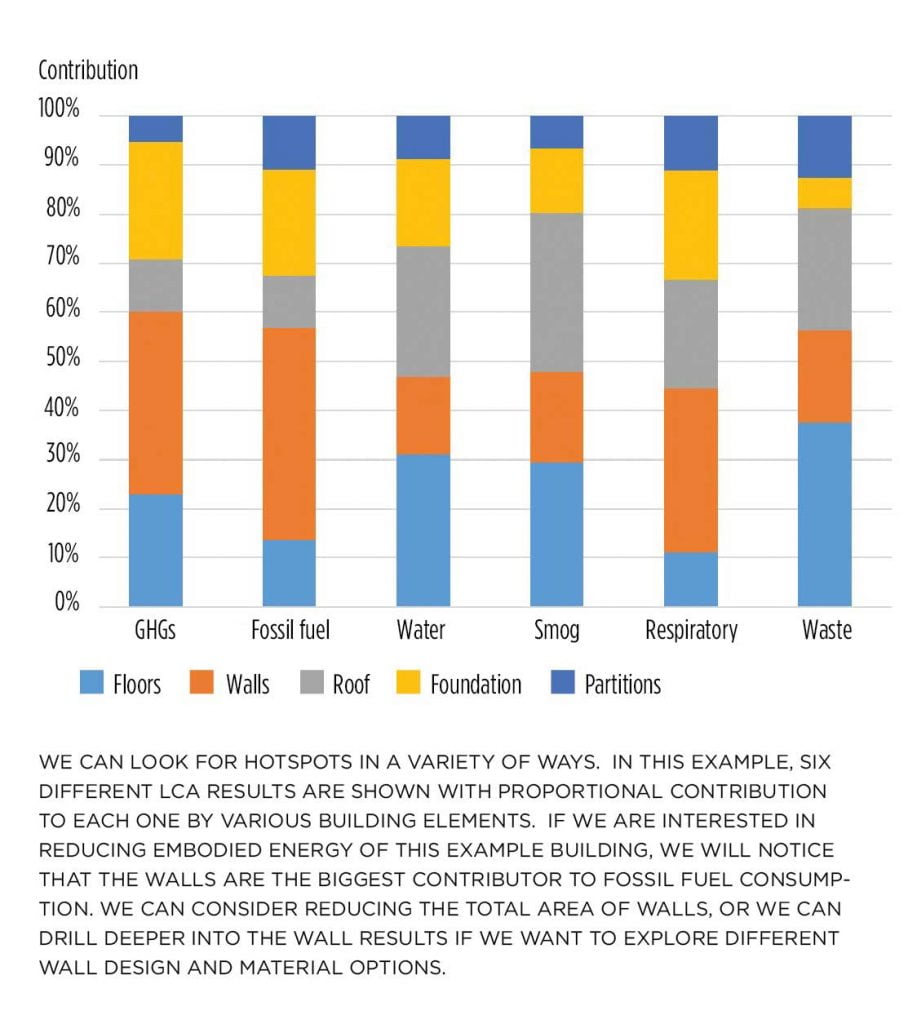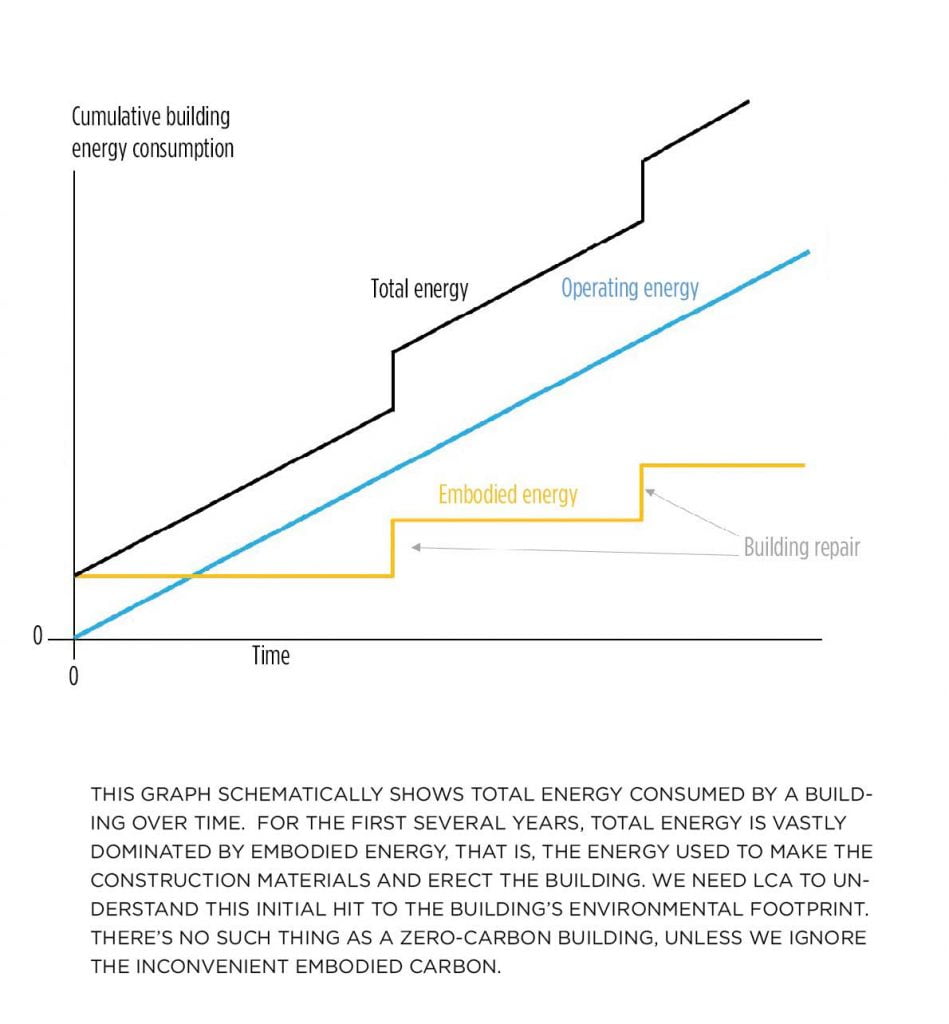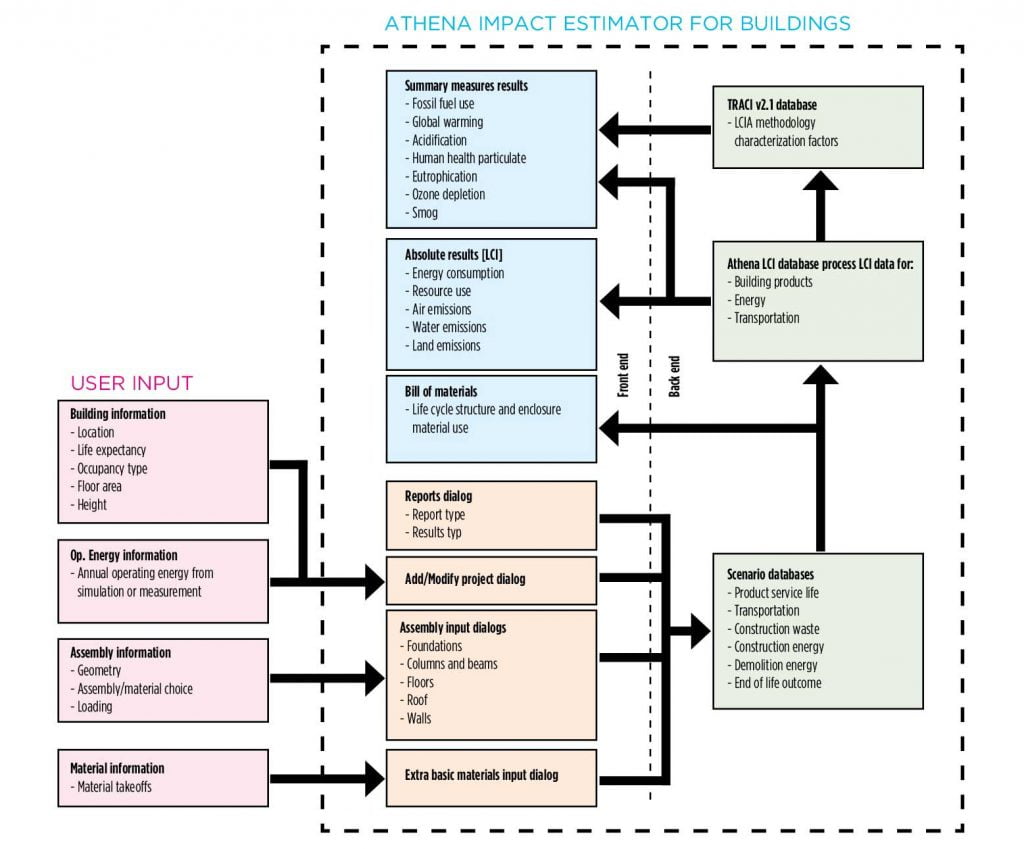
Advancing Sustainable Design with Life Cycle Assessment
By Jennifer O’Connor and Matt Bowick
INTRODUCTION
Life cycle thinking in construction is now more important than ever. Architects and engineers are becoming increasingly sophisticated in making buildings better by taking a holistic, long-range view – not just in costs and energy performance, but in environmental impacts as well.
At the same time, the sustainability world is moving quickly to jettison “green” product labels in favour of providing consumers with quantified environmental performance data. Together, these trends are motivating adoption of life cycle assessment in the construction sector.
Life cycle assessment [LCA] is a powerful tool to help sustainable design move towards a performane basis. An analytical method for estimating lifetime environmental impacts due to a product or process, LCA can help building designers quantify and validate their sustainability decisions. LCA quantifies the resource consumption and emissions due to constructing, using and disposing of a building, and then estimates the resulting impacts to the environment. LCA can be a useful new skill set and a good match for existing skills in design offices or sustainability consultancies.
Plus, the recent release of LEED v4 with a new three-point credit for LCA and a new 33-point LCA credit in Green Globes are creating an incentive to learn LCA. And it’s easier than it sounds.
Jennifer O’Connor is President of the Athena Sustainable Materials Institute. Matt Bowick is a Senior Research Associate at the Athena Sustainable Materials Institute and Director of Construction Services at Coldstream Consulting.
Read the full version of this article and take the quiz at: WWW.SABMAGAZINE-EDUCATION.INFO to receive 1 Core Learning Unit. Take approved SABMag continuing education courses for LEED AP credential maintenance.


